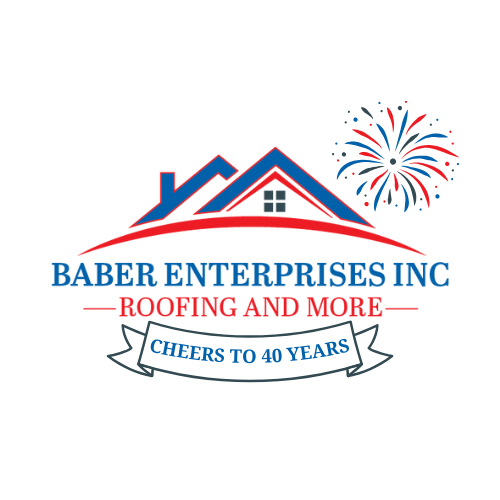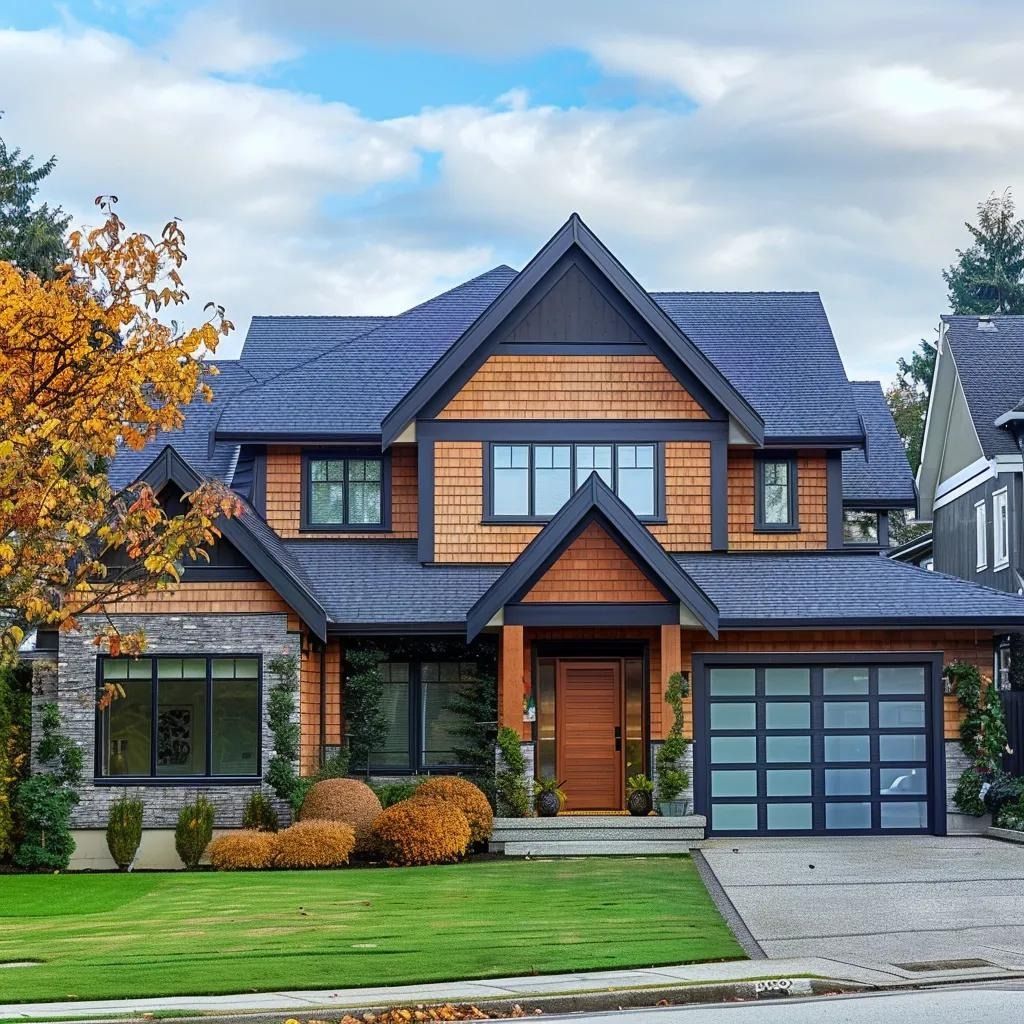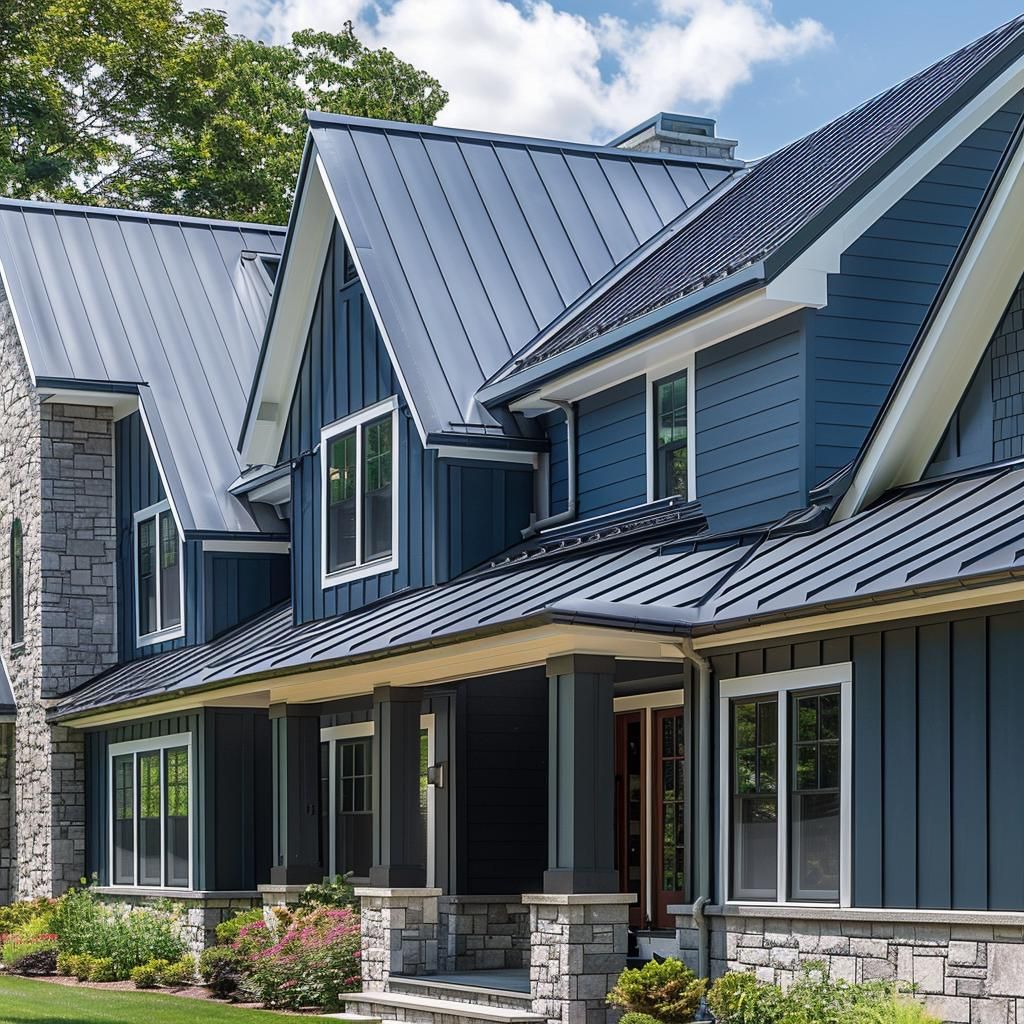Why Metal Roofing Is the Smart Choice for Staunton, VA Homes
Why Metal Roofing Is the Smart Choice for Staunton, VA Homes
It's easy to see why metal roofing is the smart choice for Staunton homeowners: it gives you superior durability against snow, wind, and hail, reduces energy costs with reflective coatings, and requires far less maintenance than traditional shingles. By choosing metal, you protect your investment, boost curb appeal, and gain a long-lasting roof tailored to local weather and resale value.
Key Takeaways:
- Exceptional durability for Staunton’s climate — resists snow, wind, hail, and humidity with low maintenance and a long service life.
- Energy-efficient performance — reflective finishes lower cooling costs in summer and improve year-round comfort.
- Boosts home value and safety — enhances curb appeal, offers fire resistance, and can reduce insurance or replacement costs over time.
Benefits of Metal Roofing
Metal roofing gives you long-term value: typical lifespans of 40–70 years, resistance to hail, wind, and mildew, plus low maintenance and high recyclability (often 80%+). Your home gains improved resale appeal and fire resistance, and many Staunton homeowners qualify for insurance discounts or extended warranties because of metal’s proven performance in local weather extremes.
Durability and Longevity
Expect metal panels with Galvalume or PVDF coatings to resist corrosion and retain finish for decades; many carry 30–50 year paint warranties. You’ll see fewer leaks, less roof decking damage after storms, and manufacturer ratings for wind up to 140 mph and Class 4 hail impact resistance, meaning fewer repairs and a single roof replacement across generations.
Energy Efficiency
Cool-metal coatings can reflect 50–70% of solar radiation and boost SRI (solar reflectance index), reducing attic heat gain. You may cut summer cooling energy use by roughly 10–25% versus dark asphalt shingles, especially when paired with proper attic insulation and ventilation, lowering peak AC loads and improving indoor comfort.
On a typical 2,000 sq ft Staunton home, a high-reflectance standing-seam roof can lower peak attic temperatures by 20–30°F, shortening compressor run times and extending HVAC life. Combining reflective coatings with a ventilated ridge and at least R-38 attic insulation maximizes savings and helps you qualify for ENERGY STAR or local rebate programs.
Aesthetic Options for Homeowners
Styles and Colors
You can choose from standing seam, metal shingles, or stone‑coated steel to match your home's character; manufacturers offer dozens of profiles and Kynar/PVDF finishes in earth tones, slate grays, deep greens, and barn reds. Metal can mimic slate or cedar while providing 40–70 year system warranties and 20–30 year paint warranties, so you get both the look you want and long‑term color retention.
Complementing Virginia Architecture
Older Staunton homes—Federal brick, Greek Revival, Queen Anne, and Victorian rowhouses—pair well with metal profiles that echo traditional materials: dark standing seam resembles slate on a Federal roof, while copper‑tone shingles enhance a Queen Anne turret. You can select matte slate grays or oxidized copper finishes to maintain historical character while upgrading performance.
Metal's light weight—typically 50–150 lb per 100 sq ft versus asphalt's 250–350 lb—reduces stress on older rafters, and Class A fire ratings plus low maintenance help when you work with local historic review boards; specifying breathable underlayment and matching ridge/trim details ensures approvals and a cohesive look that preserves your neighborhood's 18th‑ and 19th‑century streetscape.
Cost-Effectiveness Over Time
Over a 50-year span a metal roof can outlast two or three asphalt shingle roofs, lowering your lifetime roofing cost: metal panels typically last 40–70 years versus asphalt's 15–30. You’ll face fewer repairs, lower maintenance and higher resale value in Staunton’s freeze-thaw winters and humid summers. Amortizing the higher upfront price often yields net savings from avoided reroofing cycles, reduced energy use, and stronger curb appeal for buyers seeking long-term durability.
Initial Investment vs. Long-Term Savings
Metal roofing generally costs more up front—commonly $7–12 per square foot installed compared with $3–6 for asphalt—but you should weigh that against lifespan and maintenance. With metal you often avoid 2–3 asphalt replacements; using conservative estimates, your breakeven can fall between 10–20 years in Virginia depending on energy savings, repair frequency and local labor rates. Request itemized bids to model your specific ROI.
Insurance Benefits
Many insurers offer premium discounts for metal roofs because they resist fire, wind and hail; you could see reductions of roughly 5–25% on homeowners insurance in areas like Staunton. Savings depend on roof ratings (Class 4 impact, fire resistance), insurer policy language and documented installation. Provide product specs and contractor invoices to qualify and confirm whether credits apply to replacement-cost premiums or deductibles.
To secure maximum insurance savings you should submit the manufacturer’s technical data showing impact and fire ratings, a stamped invoice from a licensed roofer, and any local permit or inspection records. Standing-seam profiles with concealed fasteners and verified underlayment often score better with carriers. Ask your agent if credits apply immediately or after an inspection, and whether discounts extend to wind/hail deductibles or multi-policy bundles—proper documentation typically speeds premium adjustments.
Environmental Impact
Metal roofing reduces lifecycle waste and energy use for your Staunton home: long service life (40–70 years) means far fewer reroofs, reflective coatings can cut attic temperatures and lower summer cooling bills by up to 15–20%, and lightweight panels minimize structural demands and storm debris. Choosing metal trims down repair frequency and landfill-bound material compared with asphalt shingles, improving your roof’s overall environmental footprint.
Sustainability of Metal Materials
Aluminum roofing commonly contains 80–95% recycled content while steel panels often include 25–90% recycled material depending on the mill; selecting high-recycled-content products and ENERGY STAR-rated colors boosts performance. Factory-applied low-VOC coatings retain reflectivity and durability, and your long-lasting standing-seam system—typically 40–70 years—spreads embodied energy over decades, lowering per-year environmental impact versus short-lived alternatives.
Recyclability
At end of life, metal roofs are crucially 100% recyclable, so your old panels are rarely destined for a landfill; scrap value often offsets removal costs and contractors routinely segregate metal during reroofing. By contrast, asphalt shingles contribute roughly 11 million tons of construction waste annually in the U.S., so switching to metal significantly reduces your home’s contribution to landfill volumes.
Recycling aluminum saves up to about 95% of the energy required to produce primary aluminum, and recycling steel conserves roughly 60–74% of the energy compared with virgin production. You can bundle panels and fasteners for local scrap yards or use manufacturer take-back programs; on-site separation during reroofing and acceptance by Staunton and regional recyclers make recovery practical and often economically beneficial for your project.
Installation Considerations
Your roof deck must be sound and dry, with a quality synthetic underlayment or ice-and-water protector, continuous ventilation, and precise metal flashings; many exposed-fastener panels need a minimum slope of 3:12 while standing-seam systems can be engineered down to about 1:12. Expect City of Staunton building permits and inspections, a 2–4 person crew, and typical installation of a 1,800–2,400 sq ft footprint in 1–3 days; complex rooflines or rotten decking will add time and cost.
Hiring Professionals
Hire licensed, insured contractors who are manufacturer-certified so your warranties remain valid; request proof of insurance, three Staunton-area references, and a written scope listing underlayment type, fastener schedule, seam details, and debris disposal. Typical workmanship warranties run 5–10 years while manufacturers commonly offer 30–50 year paint/substrate warranties, and a responsible contractor will handle permits and provide inspection documentation.
Maintenance Requirements
Schedule an annual inspection plus checks after major storms, clear gutters and roof valleys of leaves and debris, and inspect fasteners and sealants every 2–3 years with resealing of penetrations every 5–10 years; add snow guards if your roofline sheds heavy snow. Gentle cleaning and timely touch-ups help preserve factory coatings and support a 40–70 year service life.
For cleaning use a soft-bristle brush, low-pressure rinse, and a non-abrasive, biodegradable detergent—avoid pressure washers that can strip coatings. Inspect flashings, roof-to-wall transitions, chimneys, and skylight seals for gaps and touch up with manufacturer-approved sealant and touch-up paint. Keep dated photos and maintenance receipts because many warranties require service records, and proactive upkeep can extend performance beyond 50 years.
Common Myths about Metal Roofing
Many myths persist, but you’ll find metal roofs rarely live up to the worst expectations: they don’t automatically rust, they aren’t universally louder, and modern finishes resist chalking and fading for 30–40 years. Specific coatings like PVDF or silicone-modified polyester and galvalume substrates provide proven corrosion resistance in humid, salt-exposed areas near the Shenandoah Valley. Homeowners who choose proper gauge (26–24 ga for steel) and professional installation typically see lower life-cycle costs than asphalt within 20–40 years.
Noise Levels
Rain or hail on a metal roof can sound different, but you won’t get a tinny din if your roof has 1/2"–3/4" solid sheathing plus standard attic insulation (R-30 is common in VA). Lab and field measurements show properly built metal roofs perform within a few decibels of asphalt shingles during storms. Installing 1–2" of rigid underlayment or a ventilated airspace further dampens impact noise so you and your family notice little change indoors.
Expansion and Contraction
Metal panels expand and contract with temperature; steel’s linear coefficient is about 6.5×10⁻⁶/°F and aluminum roughly 13×10⁻⁶/°F, so a 30-foot steel panel can lengthen roughly 0.23" over a 100°F swing. Manufacturers account for that movement with slotted fastener holes or floating clips, so you won’t get buckling or popped fasteners when systems are installed per spec.
For more detail, manufacturers and experienced contractors use standing-seam clips that allow longitudinal movement and slotted holes on through-fastened panels; clip spacing commonly ranges from 12–24" depending on wind load and profile. Installers often limit continuous panel runs to about 30–40 feet or add engineered expansion joints where longer runs are required. Following these practices prevents stress at seams and maintains finish warranties while preserving watertight performance.
To wrap up
Considering all points, choosing metal roofing for your Staunton home gives you long-term durability, energy savings, superior protection against local weather, and reduced maintenance, making it a cost-effective investment that boosts resale value and modern curb appeal; with professional installation you gain peace of mind and a roofing solution designed to perform in your climate for decades.
FAQ
Q: Why is metal roofing a smart choice for Staunton, VA homes?
A: Metal roofing stands up well to Staunton’s four-season climate—hot, humid summers and cold, snowy winters. Modern metal panels and shingles resist wind, hail, and heavy snow loads better than many traditional materials, shed snow to reduce roof stress, and are available with corrosion-resistant coatings suited to the region. Metal roofs also meet Class A fire resistance standards, which is beneficial for reducing fire risk in both urban and rural settings around Staunton.
Q: How does metal roofing impact energy efficiency and indoor comfort in Staunton?
A: Metal roofing can lower cooling costs in Staunton’s hot summers by reflecting more solar radiation than darker asphalt shingles, especially when finished with cool-roof coatings or lighter colors. Improved reflectivity reduces attic temperatures, easing HVAC load. Proper ventilation and insulated underlayment further stabilize indoor temperatures year-round, reducing heating demands in winter and improving overall comfort.
Q: What are the long-term costs, maintenance needs, and resale benefits for Staunton homeowners who choose metal roofing?
A: Metal roofs typically offer a service life of 40–70 years, cutting replacement frequency compared with asphalt shingles. Their low maintenance needs—periodic inspections, clearing debris, and checking flashings—reduce ongoing costs. Durable finishes and warranties from reputable manufacturers protect the initial investment. Because of longevity, energy savings, and curb appeal (metal profiles and colors can complement Staunton’s historic neighborhoods), metal roofs often increase property value and attract buyers willing to pay a premium for a long-lasting roof.



